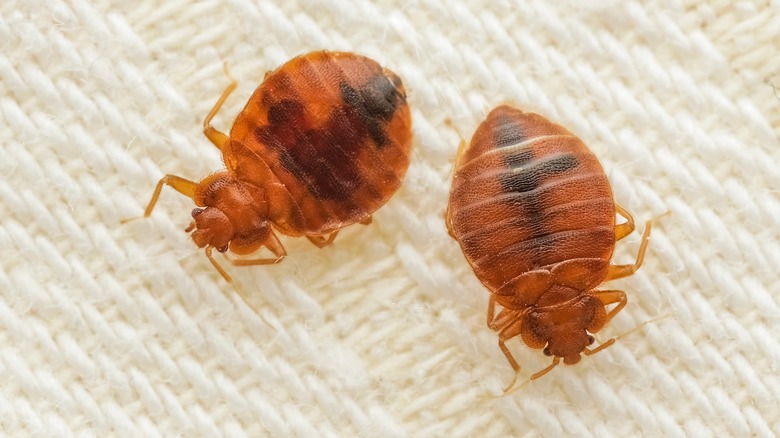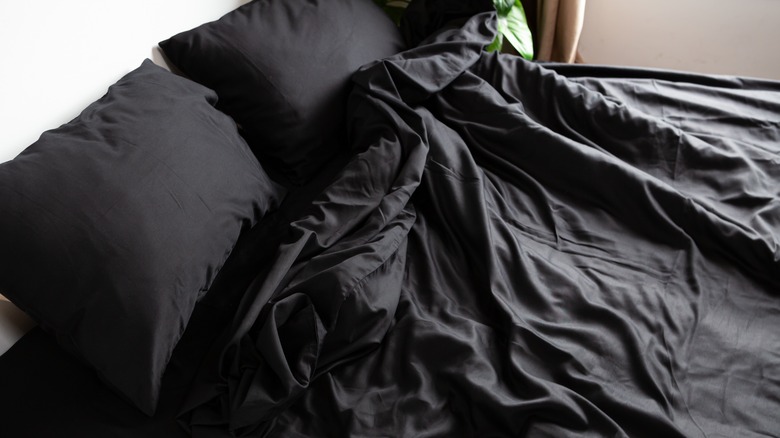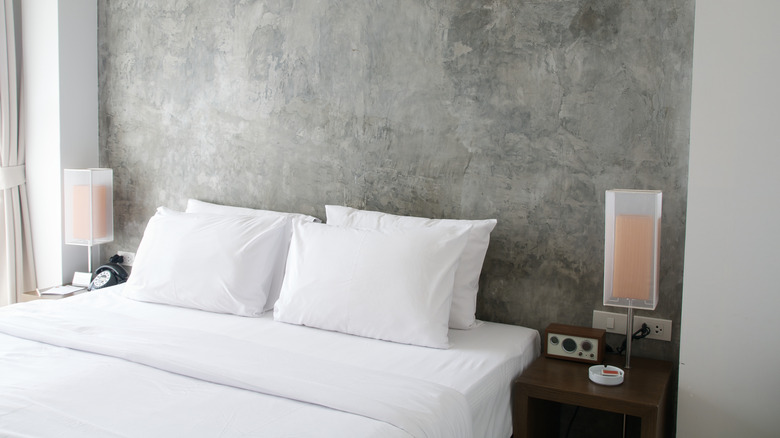Choosing This Color Of Bed Sheets Could Lead To A Big Bed Bug Problem
Bed bugs are one of the most dreaded insects to infest a home. Not only are they tough to get rid of, but they can be incredibly adept at hiding out in the day and then feasting on you at night. Though checking your bedding regularly is always a good idea, you might want to also stick to using light-colored bedsheets, because the insects actually prefer dark colors, particularly black and red.
Bed bugs are small, reddish-brown insects that feed on the blood of humans but can also bite your pets. These nocturnal critters are about the size of an apple seed and have flat, oval-shaped bodies. Though bed bugs are not known to transmit diseases, their bites can be intensely itchy and uncomfortable. They can also cause insomnia and lead to anxiety. Naturally, it pays to be vigilant and make your home as inhospitable to bed bugs as possible.
Bedbugs prefer red and black for protection
In a study where bed bugs were given a choice of different colored hiding spots, they were most likely to choose red or black, suggesting a proclivity for darker shades. Researchers tested bed bugs' pigment partiality by placing them in dishes with colorful paper harborages. After 10 minutes, they found the most bed bugs gathered under red and black tents, while fewer opted for white and yellow.
One proposed reason is that bed bugs, with their reddish-brown bodies, can easily camouflage in red and black, blending in seamlessly with their surroundings. The shades also resemble their own well-fed state, filled with blood, and potentially help them hide better. This makes them harder to spot both for predators like spiders and also humans looking to eradicate them. In addition, darkness is another factor, since darker colors like black and red offer a safe haven away from the harsh glare of light and potential threats. As nocturnal creatures, bed bugs thrive in the dark.
Bed sheets won't prevent bed bugs
Bed bugs are attracted to humans by our warmth, carbon dioxide, and blood, so the shade of your sheets doesn't directly affect how attracted they are to you. While they won't be specifically targeting you based on your sheet color, having dark sheets might make them more likely to choose your bed as a hiding spot. The longer bed bugs go hidden and keep breeding, the bigger a bed bug problem can become. Also, keep in mind that while lighter hues like white and yellow might be less appealing for hiding, it doesn't guarantee that bed bugs won't find other places that provide adequate camouflage. They often hide in couches, chairs, behind wallpaper, and can even hide in sneaky places you might forget to check, like electric sockets.
Prevention is always your best bet, so regularly vacuum carpets and furniture, and be sure to seal cracks and crevices. Avoid using secondhand mattresses and furniture. Additionally, reduce clutter around your home, be careful when using shared laundry facilities, and inspect hotel rooms for signs of bed bugs when traveling. You might also want to leave luggage in an outdoor area or on a straight, unupholstered chair when you get home, and then wash your clothes right away. If you suspect an infestation, one of the first things you should do if you think you have bed bugs is to confirm it, immediately treat your home, and consider contacting a professional pest control company.


